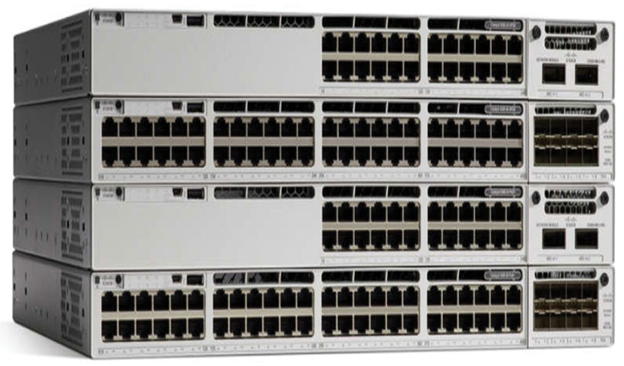Upon completion of this chapter, you will be able to answer the following questions:
- What are Cisco LAN switches?
- What are the available switch forwarding methods and port settings on Layer 2 switch ports?
- What is the Cisco LAN switch boot process?
- What are Cisco small business routers?
- What is the Cisco router boot process?
Key Terms
This chapter uses the following key terms. You can find the definitions in the Glossary.
automatic medium-dependent interface crossover (auto-MDIX)
cut-through switching
fast-forward switching
fragment-free switching
store-and-forward switching
I’m back! Halimah told me that she has been given her first assignment. She will be helping to design and set up a new branch network. She is very excited about this opportunity!
If I had this task, I’m not sure I’d know quite where to start. I know about the devices and media needed, and about addressing schemes. But I have never set up a switch, let alone more than one switch. I’ve set up my home network router, but an enterprise router is probably a bit more complex.
I think this chapter is exactly what I need. How about you?
Ethernet switches are Layer 2 devices that forward Ethernet frames. Switches can be interconnected to allow more devices to be connected.
Home and small business networks usually do not require more than one or two networking devices in order to function efficiently. A wireless router, equipped with wireless connections and a few wired connections, is the only piece of networking equipment that is necessary in order to provide sufficient connectivity for the average small group of users. These routers are configured through a web browser and have an easy-to-use graphical user interface (GUI) that guides you through the most common configuration items.
Wireless routers that are designed primarily for home use are not appropriate for most business networks that must support more than a few users. Modern networks use a variety of devices for connectivity. Each device has certain capabilities for controlling the flow of data across a network. A general rule is that the higher the device is in the OSI model, the more intelligent it is. What this means is that a higher-level device can better analyze the data traffic and forward it based on information not available at lower layers. As an example, a Layer 2 switch can filter the data and send it only out of the port that is connected to the destination, based on the MAC address.
As switches and routers evolve, the distinction between them may seem blurred. One simple distinction remains: LAN switches provide connectivity within the local area networks of the organization, while routers interconnect local networks and are needed in a wide area network (WAN) environment. In other words, a switch is used to connect devices on the same network. A router is used to connect multiple networks to each other.
Figure 35-1 shows a series of Cisco switches.

Figure 35-1 Cisco Catalyst 9300 Series Switches
Figure 35-2 shows a series of Cisco routers.

Figure 35-2 Cisco 4300 Series Routers
In addition to switches and routers, there are other connectivity options available for LANs. Wireless access points that are deployed in enterprises enable computers and other devices, such as IP phones, to wirelessly connect to the network, or share broadband connectivity. Firewalls guard against network threats and provide security, network control, and containment.
